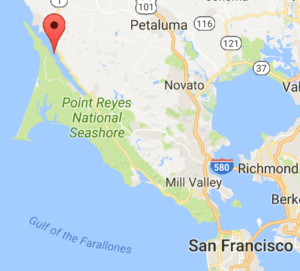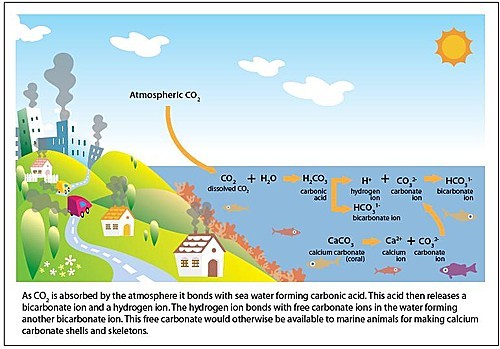Bye-Bye Beautiful Bivalves

What will we do when ocean acidification wipes out all of our favorite seafood? Will we advocate for real changes to curb carbon emissions then? #savetheoysters #startnow
Who doesn’t love a good buck-a-shuck happy hour? Sitting on an outdoor patio, beer in hand, soaked in sunshine, squeezing a perfectly juicy lemon on a freshly shucked oyster – now that’s living.
If you haven’t had this experience yet, it’s practically a sin (and certainly a sacrilege as a resident of Boston). Even worse, you may be running out of time! No, no, not because winter is coming… neither White Walkers nor Boston Winters are an eminent threat to our beloved oysters. But climate change is.
Real quick, let’s talk oyster-ology
You might describe oysters as slippery, slimy, little blobs of salty deliciousness – and you’d be right. Yet, just like a fine wine, each type of oyster has a different flavor profile: briny, sweet, buttery, plump, and the list goes on. What makes them so unique? Three factors: the oyster’s species, growout method, and environment. [1]

There are six commonly cultivated species, which defines the initial flavor, and then the growout method alters the shape and depth of the shell cup. [1] However, since oysters are filter feeders, the most important element for flavor is the water in which the oyster is grown, known as the “merroir” (like “terroir” in wine). Thus, specific locations give even the same species of oyster varied tastes. [2] The environment is so crucial that oysters will often be named for the area of the bay in which they were raised.
Now, meet Hog Island Oyster Co.

A premier producer of sustainable shellfish, the Hog Island Oyster Co. raises 3.5 million oysters per year on 160 acres in Tomales Bay. Their main oysters are aptly named Hog Island Sweetwaters after their specific area of the bay. [3] After having slurped down over ninety oyster varieties, Hog Island Oyster Co. consistently delivers some of the best oysters in the world that even other farms on the same bay can’t match. What does that mean? Hog Island found a magical location that makes all the difference in producing a superior oyster.
So, what does ocean real estate have to do with climate change?
With the fate of Hog Island linked to its location, imagine if the waters of Tomales Bay started to change. In the mid-2000s, the owners of Hog Island found themselves in exactly that predicament. Seemingly inexplicably, oyster larvae began dying in droves, wiping out more than half of Hog Island’s oyster crop before they reached maturity. [4] After two years of tests looking for bacterial diseases, Hog Island was informed by researchers that lower water pH due to ocean acidification was the culprit, eroding the protective calcium carbonate shells of the young oysters and killing them before maturity. [5]
While the rhetoric of climate change focuses on atmospheric impacts, the fact that our oceans have absorbed 48% of all the carbon dioxide emitted since the industrial revolution is often overlooked. [6] As all that CO2 mixes with sea water, carbonic acid forms, causing ocean acidification.

Now, at an alarming pace, acidified water long stored at deep ocean depths has begun to rise to the surface during seasonal tides, and Hog Island’s oysters are paying the ultimate price of our oceans being used as a carbon sink for decades. [7]
Well, can Hog Island even fight back?
Hog Island owners Terry and John have installed a minute-by-minute monitoring system to gauge water conditions, but without expensive machinery to correct for temperature or pH changes, the data only allows the team to forecast impacts on oyster yield. The team also now grows baby oysters in different locations, including a $1.5 million hatchery they built in Northern California, and transports the oysters back to Tomales Bay when they have enough shell to withstand the acidic conditions. Furthermore, they have had to limit the number of oysters that customers can buy to guarantee enough larvae to continue operations. [8]
Alright, what more can be done?

Frankly, mitigating away Hog Island’s issues is nearly impossible. While other industries may be able to find opportunities to address the impacts of climate change, Hog Island has already achieved an incredible feat maintaining operations in their current location by improvising their hatchery process. As ocean acidification continues to worsen, they will need to invest in expensive machinery that can control water chemistry and temperature or simply move their operations to a more northern bay. In the short term, they can work to strengthen their brand and solidify distribution channels so that when they are eventually forced to move locations and the oysters become a different product altogether because of the new merroir, they can maintain their customer base. Lastly, Hog Island can continue to speak out and get more people invested in curbing carbon emissions; with good eats on the line, perhaps we can inspire more advocacy.
(797 words)
[1] “How many oyster varieties are there in the world?” Web blog post. The oyster is our “word.” Pangea Shellfish Company, 3 Apr 2016. <http://www.pangeashellfish.com/blog/how-many-oyster-varieties-are-there-in-the-world>.
[2] Storm, Christian. “A quick primer for the next time you order oysters.” Business Insider, 28 July 2014. <http://www.businessinsider.com/oyster-primer-2014-7>
[3] Hog Island Oyster Co. Company webpage. <https://hogislandoysters.com/oysters/farming>
[4] Johnson, Lizzie. “Oyster farmers worried as climate change lowers ocean pH.” San Francisco Chronicle online, 15 Aug 2015. <http://www.sfchronicle.com/bayarea/article/Oyster-farmers-worried-as-climate-change-lowers-6445523.php>
[5] Barton, Alan; Hales, Burke, Waldbusser, George; Langdon, Chris; Feely, Richard. “The Pacific oyster, Crassostrea gigas, shows negative correlation to naturally elevated carbon dioxide levels: Implications for near-term ocean acidification effects.” Limnol. Oceanogr., vol 57, no. 3, 2012, pp 698 – 710.
[7] Aguirre, Jessica. “How Climate Change Is Changing The Oyster Business.” NPR the salt online, 2 Aug 2010. <http://www.npr.org/sections/thesalt/2012/08/01/157733954/how-climate-change-is-changing-the-oyster-business>
[6] Prickrell, John. “Oceans found to absorb half of all man-made carbon dioxide.” National Geographic news online, 15 Jul 2004. <http://news.nationalgeographic.com/news/2004/07/0715_040715_oceancarbon_2.html>
[8] Johnson, Lizzie. “Oyster farmers worried as climate change lowers ocean pH.” San Francisco Chronicle online, 15 Aug 2015. <http://www.sfchronicle.com/bayarea/article/Oyster-farmers-worried-as-climate-change-lowers-6445523.php>



Wow! This is crazy! First off, I very much appreciated your thoughtful and thorough personal descriptions of the oysters. Thank you so much for bringing up the dangers from acidified water. Indeed, so often, the rhetoric is centered around the negative impacts on our atmosphere. I imagine this phenomenon can and will continue to have impacts on so many species across different ocean depths.
Michelle, great post. Love me some bivalves as well, so thanks for your concern. I agree that there are two key considerations here: how to respond from an environmental standpoint, and what to do from the point of view of the business.
To the former, I am impressed by the level of sophistication of their processes for tracking the growth of the oysters and the corresponding conditions of the water. I would be curious if these technologies are reapplied outside the context of the oyster industry in order to track the overall well-being of bodies of water elsewhere. In other words, their might be an important benefit to information and technology sharing when it comes to gauging the overall cleanliness and health water sources. It would be important to keep locals informed in this regard in order to generate broader concern about the issue.
On the latter point, Hog Island Oyster Co. is right to diversify away from its current location (i.e. Cali), to strengthen its distribution network, and to consider whether an outright relocation might be necessary down the line. I wonder whether it might be more cost effective to simply recreate the desired “merroir” conditions artificially. Given that their current technology can alter PH balances in a natural context, could producing oysters in a some sort of lab be a viable business strategy going forward?
Great article, Michelle. What is troubling to me is understanding how this plays out. Rising ocean acidity seems to be a bi-product of a history of increasing carbon dioxide emissions. That said, if we are already at the “break-point” in which our appetizers can no longer thrive, is it too late? Would a reduction in emissions, or an increase in environmental sustainability efforts, help to reverse the effects mentioned above, or similar to Propecia / Rogaine, are we currently at a point in which we just do not want to worsen the current predicament? In the latter case, it seems as though relocation or focus on man-made farming alternatives could be the only options.
Michelle – As the 17th-century Irish writer Jonathan Swift once said, “it was a bold man that first ate an oyster,” but as your blog has suggested it may take even bolder action to save oysters for the enjoyment of future generations. Living near the Chesapeake Bay for the last ten years I have grown accustomed to eating oysters on a weekly basis and became quite familiar with the struggles the oyster (and crab) industry has faced over the past 50 years due to over-harvesting, pollution, and a changing aquatic environment. However, the oyster population in the Chesapeake Bay is now rebounding, but it still represents a fraction of the original oyster population. One reason this population has rebounded is because of the development of a hardy strain of the native oyster, Crassostrea virginica, by scientists that is able to survive in the changing ecosystem. Is this a strategy that Hog Island Oyster Company could try to replicate?
Also, with ocean levels rising, I wonder how changes in the amount of freshwater vs. saltwater will affect salt concentrations in brackish waters and therefore the growth and taste of oysters from these waters.
As a disclaimer I personally prefer the taste of Atlantic oyster species to those produced on the Pacific, so I would be more likely to order California oysters at happy hour knowing they were actually derived from East Coast species. I was curious on your preference, East Coast or West Coast oysters?
https://e360.yale.edu/digest/a_remarkable_recovery_for_the_oysters_of_chesapeake_bay/4437/
I’m all about the west coast oysters! I think you have a great point with brackish waters changing salinity and the taste of oysters as well. We better find a good boston buck-a-shuck now while there’s still time!
I like where this conversation is going!
Awesome article and very well written, Michelle!
Interesting to hear about less publicly known effects of climate change, such as oceans absorbing ~50% of the CO2 and the drastic impact that has on the flora and fauna of the sea world. I was fascinated of the degree of professionalism that is applied in this industry where you would typically expect a simple non-sophisticated fishing industry!
I agree that the diversification in terms of location is a good countermeasure, even if maybe not very sustainable in the long-term. However, also shocking to see that there seems to be no really effective countermeasure tackling the real problem. Certainly this will have an effect on the overall supply-demand situation of oysters and ultimately the price level that we will see in the future!